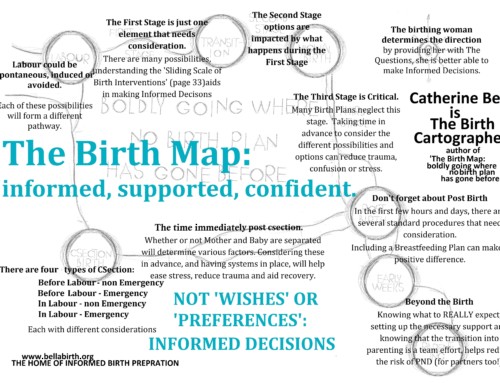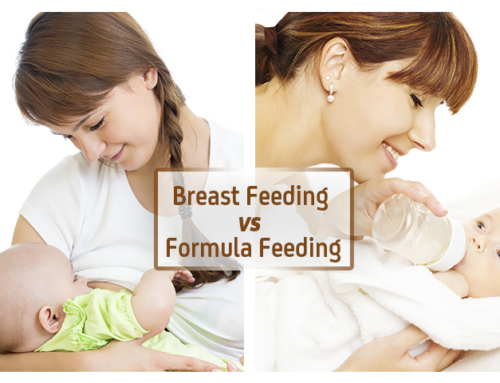The study comes from China where 214 women either received an epidural or not during labour and were then assessed for various outcomes at three days and six weeks. Women self-selected into their groups (i.e., they decided if they wanted the epidural or not) and thus demographic variables were also measured to ensure no differences between the two groups or to control for any inherent differences. (It seems women opted into the epidural early on and it’s unclear if women were able to select an epidural after a certain point.) Women’s pain was assessed using a 1-10 scale; all women reported on the pain once they had reached 2cm or more dilation (which is fuzzy given pain at 2cm and pain at 7cm would be very different) and again at 10cm dilation and women who did receive the epidural also reported on pain at both 10min and 30min post-epidural. Most generally, the authors found no demographic differences between the women who selected to have an epidural versus those who did not. There were, however, a few birth differences with more women in the epidural group (66.4%) receiving oxytocin before delivery than those in the non-epidural group (50.5%), though the use of oxytocin was unbelievably common. More women in the non-epidural group ended up with a c-section (36.4% vs. 15%) and were less likely to have a vaginal delivery (50.5% vs. 70.1%). The duration of the first stage of labour was significantly shorter in the non-epidural group (300min versus 510min); however, the other stages were of similar duration. Pain at 10cm was rated significantly worse for the non-epidural group versus the epidural group (with all mothers who received a c-section removed from the analysis). Postpartum measurement and analyses on day three found significant differences between the two groups on both Marital Well-Being and Maternal Anxiety, with women in the non-epidural group rating lower on both variables, but found no differences in Depression. Postpartum measurement and analyses on day forty-two (six weeks) found that women in the non-epidural group were less likely to be breastfeeding (49.5% vs. 70.1%) and more likely to suffer clinical levels of depression measured using the Edinburgh Postnatal Depression Scale (34.6% vs. 14%). The authors used Stepwise Logistic Regression to test the viability of each of the 10 variables that were significantly related to PPD at six weeks – satisfied with habitation condition, PMS pre-pregnancy, attendance at childbirth classes, NRS pain score at 10-cm cervical dilation, c-section, satisfied with overall medical service, marital satisfaction score at 3d postpartum, anxiety score at 3d postpartum, depression at 3d postpartum, and breastfeeding at 42d postpartum – and receiving an epidural still remained significant in reducing the risk, along with attending childbirth classes, depression at day three, and breastfeeding at six weeks. This research brings to mind another piece of “research” (quotations there for good reason which I’ll get to) from 2012 that reported a link between post-traumatic stress disorder (PTSD) type symptoms and natural birth[2]. In this study they found that of the nearly 26% of women who experience PTSD-type symptoms, 80% had a natural, drug-free delivery. The assumption therein was that it was the pain of childbirth that was causing the PTSD symptoms; however, and this is a big however, the “research” was so poorly analyzed, no such thing could be determined. Yes, the statistic that 80% of the group who experienced these symptoms had a natural birth does hold, however, there were many other variables that were also significant, including previous “traumatic” births, depression and anxiety, medical complications during pregnancy, and they anticipated more fear and pain during childbirth. The researchers controlled for none of these other variables and thus we simply can’t say that the issue is with natural birth per se, or if it is simply related to PTSD symptomology via a relationship with another variable. But doesn’t this new study control for that, you ask? Well, yes and no. The first problem is that the new study doesn’t include interactions in their model (this is also a problem for the research on PTSD). They have multiple independent variables that predict PPD, but they don’t test if or how these interact together to predict PPD and as anyone who works in the field of studying birth trauma or PPD knows, it is never a single issue (see [3] for a fuller discussion). For example, the fact that there were significantly more c-sections in the non-epidural group leads one to question if c-sections interacted with other elements like pain or anxiety at day three to cause PPD at six weeks. Another question that pops up when looking at the data is the role of depression at day three: Although there was no significant difference between the two groups on depression on day three, it was a significant predictor of PPD at six weeks. This would suggest that it was interacting with another variable to result in the increase in the non-epidural group, perhaps having had a c-section or lack of marital support at home, to offer a couple suggestions; however, without interactions, we cannot say. When looking at a complex issue like PPD, it is often a variety of factors interacting that lead to the outcome of PPD and although looking at independent predictors is helpful, it doesn’t give us close to the entire story (and given some of the findings here, which I will discuss next, this becomes even more important). In addition to the event-level variables, there was no attempt to examine women’s fear of pain prior to labour, mental state prior to labour, or any psychological variable that would have a large influence on a woman’s reaction to events in labour. The focus prenatally was on the physical side of pregnancy. A second problem is that the authors fail to provide information on the type of labour women had. The mere fact that a significantly greater number of women in the non-epidural group ended up with an emergency c-section suggests something else was happening during these labours. Given previous research that finds having an epidural often increases the risk of a c-section[4], one has to wonder what was going on here. One possibility has to do with the use of oxytocin in the two groups. If the epidural group received it after the administration of the epidural in order to speed things up again, the intense contractions and increased pain would be less noticeable. However, for the 50.5% of women in the non-epidural group, the increased intensity and pain would be far more noticeable than if they had a natural delivery. In many ways, the main question here becomes about the protocols in place at this hospital that are resulting in such high rates of intervention. The third problem (and final one I’ll discuss herein although I’m positive there are more) is the use of stepwise regression to determine significance. For those who don’t know stats too well, regression is a statistical technique where you enter various variables to see how well they predict some outcome individually and as a whole (the “model”). The most common way to do this is to enter the ones that have theoretical or practical relationships (along with any interactions) and you get values that tell you how well they do at predicting the outcome as a whole and also how each individual variable does in predicting the outcome. One of the methods you can use to enter your predictor variables is to do it “stepwise”. In this technique, each variable is examined one at a time to the model and if it results in a significant increase in predictive power, it is included, otherwise it’s ignored so you get the variable that predicts the best in Step 1, then the one that predicts the remaining variance in Step 2, and so on. At the end you have the variables that result in the best individual predictions. Stepwise regression has been written of in scholarly articles as being the one type of regression that should NEVER be used (e.g., [5]). One of the main problems is that stepwise overestimates significance, sometimes biasing coefficients up to 25%[6], and the methods used herein (i.e., logistical stepwise regression, small-moderate sample size for the number of variables) are ones that are prone to this overestimation. This means that the significance of their variables may not be that significant. A second problem is that stepwise will actively hide the third variable problem. If two variables are highly related and both are related to the outcome variable, only the one that has the greatest prediction will be entered. Why? Imagine we have variables A, B, and C and we’re using A and B to predict C. If A and B are both highly related and both are related to C, once the one with the highest predictive value is included, say B, the remaining variable A will not predict C above and beyond what B has done and will not be included leaving it to seem as though B predicts it alone when perhaps it is in part due to the relationship with A. In the case herein, the final model they provide may reflect other relationships (such as the relationship between depression and breastfeeding duration or having had a c-section) that are masked by the method used. Despite my problems with this study, it raises a very good point and one that we should consider: For some women, the use of an epidural may truly reduce the risk of PTSD symptoms or PPD given the rise in women who are becoming incredibly fearful of the process of birth. In the UK alone, there is a surge in requests for c-sections in order to avoid labour from women who have tokophobia (the fear of childbirth)[7]. Tokophobia has multiple possible causes including previous negative experiences, fear of pain, depression, previous sexual assault, and so on. Some believe that this increase is in part due to the dramatic and painful portrayal of birth in our society, but for others it’s likely from their own experiences of being mistreated, feeling helpless, and lacking support that leads to a fear of experiencing such things again. If we enter a situation in which a woman is in labour and terrified of the pain for whatever reason, it is sensible and fair to offer her the choice to have an epidural. However, if we start telling women that having an epidural will lower the risk of PPD based on this data alone, we run the risk of assuming a simplistic answer to a complex problem and harming more women. If an epidural replaces support, care, and giving women the chance to feel in control of their labour (with or without pain relief), we will likely run into even more cases of PPD and PTSD symptoms. The flaws in this study – especially the failure to consider the labour as a whole and to discuss the differences that led to a significantly greater number of women receiving emergency c-sections in the non-epidural group and the failure to consider interactions between their predictors – mean that the value of this study lies in highlighting the issue of pain in labour and how various things may contribute to result in problems post-partum and various things may help prevent it. If anything, the study tells us what we already knew: PPD is a complex and multifaceted problem that requires individualized treatment and prevention.  A new study coming out in the journal Anesthesia & Analgesia
A new study coming out in the journal Anesthesia & Analgesia
Can Epidurals End Post-Partum Depression?
[1] in August claims that having an epidural during childbirth can cut both the pain of childbirth and postpartum depression. Obviously epidurals can reduce pain (if they work for you; there are a small subset of women who may experience more pain or other problems), but the idea that they reduce postpartum depression (PPD)? This is something that ought to be looked into given the prevalence of PPD and the impact it can have on mother-child outcomes.






I do think it raises some interesting questions. At the time of my first birth I was completely unprepaired for childbirth. I opted for an induction at 41.5 weeks, and epidural, etc. Basically whatever the doctor suggested I was on board with. No regrets. The birth was fine and my baby was healthy. My only issue was the episiotomy caused me a good deal of physical pain for weeks (that’s an issue for another time).
However, the second time around I felt more prepared and wanted to have a birth without my epidural. Same hospital and staff. They had no idea how to support a woman not having an epidural. The just kept asking me if I wanted it yet, etc. It was frustrating and disempowering to say the least. My last 3 were out of the hospital with midwives and the support they gave me during labor made a huge difference.
So I wonder what sort of support women are getting in hospitals during natural births. Are they prepared mentally? Most people I know personally who were traumatized by natural birth had very fast, painful, out-of-control type births where there wasn’t time for an epidural.
I completely agree re the support system in place in hospital. I have a feeling that’s a HUGE component of it, especially for those experiencing high pain.
Agree re support. This is anecdotal but I lived in China for a few years and my husband is Chinese. He was present and a rock at our daughter’s birth but amongst his peers (late 20s) he does not know of any father who did the same. In fact he tells me most hospitals forbid it in case something goes wrong and the partner gets ‘over excited’ and causes trouble for staff. Furthermore women are encouraged not to ‘waste energy’ moving around. Every woman I have met also followed the traditional 30 day rest period where they do not leave the house and in one case her mother did not allow her even to wash her hair. This particular aspect could work out to be lovely and special or equally disempowering and suffocating depending on individual personalities and circumstances (there are plenty of families that bring the mother endless tasty food and ensure her only responsibility is to breastfeed and snuggle the new baby). There are just so many cultural aspects that could be at play here that I thought it was worth a mention, on top of the major points made.
Love, love love your site by the way Tracy. One of the very few blogs I subscribe to, so keep them coming for many years please 🙂
Thank you for the personal information! I love the idea of rest, but it’s true – it could be horrible for some women!!! I had to be moving around, but enjoyed moving around at home or just in the neighbourhood.
And thank you for the kind words too 🙂
Oh, re moving around I meant during labour. Active birth is not encouraged at all. These experiences are just stories from one province of course, but also includes policy at one expensive hospital in Beijing.
Hi Tracy,
Another Tracy here who has been reviewing this paper over the last few days. Part I is my initial reaction to the paper and Part II are some insights from a LLL and IBCLC who lived in China. The devil really is in the details.
Part I – Epidurals – The Answer to World Peace?
http://bit.ly/1qHEWhR
Part II – Unmedicated Bith in China
http://bit.ly/1toJ2LT
Tracy Donegan – Midwife
Thank you for sharing Tracy!!!
One sentence: made in China.
The culture, social interactions, and laws are so incredibly different there that anything you take from there is horribly tainted, even if done perfectly, in reference to North America/Europe. China has a one-child policy, for probably all of these women this was 1) their first live birth and 2) their last live birth. If they had a female child, depression would almost be culturally obligatory-yet I see nothing in your article about them adjusting for or controlling for the gender of the child. Forced abortion is incredibly common in China, some of these women may see childbirth inherently as a time of deep mourning for children very much wanted but destroyed because they were ‘illegal’. Government jobs are assigned, time off is controlled, their partners, family, and friends may be hours away and unable to attend the birth or give help to the new mother/child dyad. The mother may be forced to return to work before they are (or feel themselves to be) physically or emotionally able or risk not just a loss of job or income as in other countries but government sanctions. By 6 weeks the women, almost without fail, would already have been implanted with an IUD or sterilized-even against their will.. There are too many factors that affect Chinese mothers that mothers in almost any other country will never have to deal with. China is, after all, the only country where female suicides outnumber male. Might as well take a study on childhood morbidity from teen mothers in the Sudan and try to apply it to America.
“Tokophobia has multiple possible causes including previous negative experiences, fear of pain, depression, previous sexual assault, and so on. Some believe that this increase is in part due to the dramatic and painful portrayal of birth in our society, but for others it’s likely from their own experiences of being mistreated, feeling helpless, and lacking support that leads to a fear of experiencing such things again.”
Hi Tracy, I really enjoy your website and your scientific approach to analyzing some complex and polarizing issues. I have to say that I completely disagree with your assessment of the causes of Tokophobia (above), or at least, I find it a simplistic one. You fail to acknowledge that some women’s fear of childbirth may be based on some hard truths about birth. I had a horrendous back labor that lasted 37 hours and ended up requiring forceps to deliver my son whose head was cocked to the side and lodged on my pelvis (hence the excruciating back labor. My labor started out as a home birth and ended up in the hospital. I did everything right, had the best midwife, a supportive partner, practiced prenatal yoga, hypnobabies etc. Basically I did everything right and it still went horribly wrong. It was absolutely the most painful and traumatizing experience of my life (psychologically and physically). I understand that many women have positive birth experiences, but I’ve also come to learn that this is not the case for a significant minority of women. It surprised me how many women in my life came forward after my godawful birth experience to share their own with me. I absolutely believe that women should feel respected, supported and given choices during childbirth. I also don’t believe that there’s any way to prevent birth from being horrendously painful for some women. I know this doesn’t support the natural view of childbirth, but I believe it is the truth, and to deny this is to invalidate and silence many women, when it seems this movement’s mission is to empower and protect women. I’m not saying “c-sections and epidurals for all!” is the answer, but I think it is important to acknowledge that yes birth can be a beautiful, empowering experience, and it can also be truly awful and whatever it will be isn’t entirely up to us.
Thanks for breaking down the stats Tracey, and Tracey Donegan thank you for sharing your links. I couldn’t quite believe the results of this study! The interventions and birth outcomes in the two groups didn’t add up. My first thought was “what the hell are they doing in that birth ward?!”. With your insights the results make more sense. It sounds like this study was seriously flawed not just in the statistical analysis but in the methods as well. It seems there was no control for the very different labor/birth care the two groups had. Seriously, if the epidural group was receiving continuous care during labor with the same care provider and allowed access to loved ones, and the natural group was denied all of this as well as being augmented, having their movement restricted then I’m not at all surprised at the outcomes they had! I think you said it perfectly Tracey D when you said “If the newspaper headline had been –
“First time mothers who have no continuous midwifery support in labour, no partner in attendance, experience augmentation with syntocinon without pain relief with restricted mobility are at increased risk of PND” (as well as caesarean section, birth trauma, reduced breastfeeding rates, PND, ongoing war in the world).
It’s the same study…but it would never have been a headline…it’s just not sexy enough….. but it would have been closer to the truth with plenty of robust evidence to support it.”
Lets see this study performed with both groups of women laboring and birthing in a loving and supportive environment with their physical and emotional needs being met and then lets see what the real outcomes are. My bet is that they would be very different. It would also be very interesting to include a third group when running the stats- women who desired a natural birth but had a different outcome. I feel that they may be at higher risk than those who chose an epidural birth and got it or wanted a natural birth and achieved it. What do you think?
Why do you use a photo of Florence Owens Thompson to illustrate PPD? This was a woman who worked hard to keep her family together as a migrant worker during the Great depression in the midst of the dust. She has a name, a story, a background, yet you reduce her down to an association between the Great Depression and PPD? Her struggles, triumphs, and successes keeping her children from starvation in the face of her husband dying, and everything around her falling apart in desperate times deserves far more than this.
Thank you for pointing this out. Image changed!